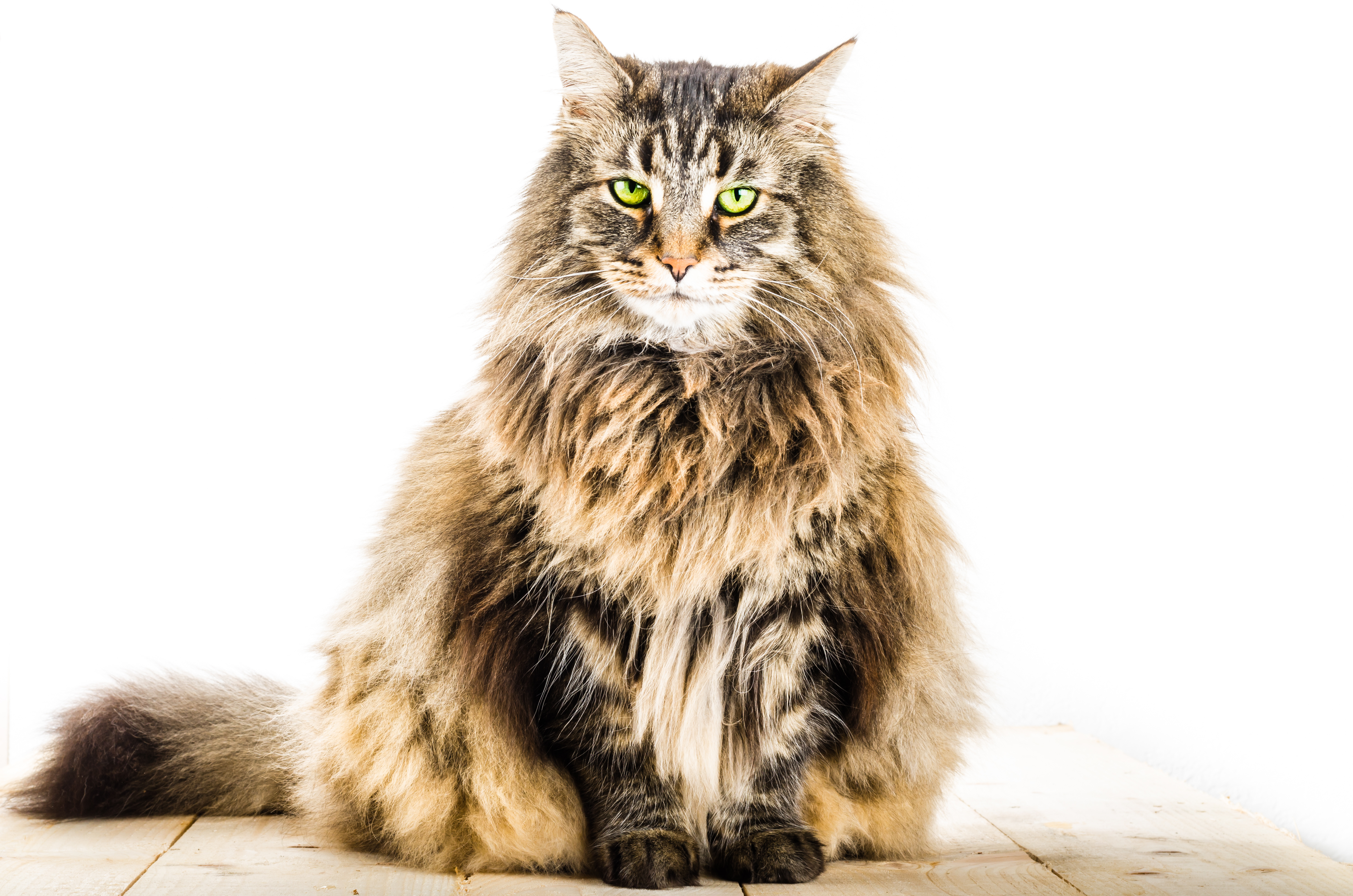
Yes, there is such a breed. The Norwegian Forest Cat runs on the large size, with males ranging from 13 to 22 pounds.
No visible date – i iz cat (yes, that’s the website’s name) – Some facts about the Norwegian forest cat, the pet of Vikings.
Tradition holds that Vikings carried them along on raids to hold down the number of mice on board and thus minimize the lost grain.
Legend hold that Freya, the Norse goddess, used six large cats to pull her chariot.
Article says the breed is the national cat in Norway. It is quite gentle and friendly.
I read another article (lost track of the link) which said the Norwegian Forest Cat has two layers of fur. One shorter undercoat provides extra insulation and warmth during the harsh winters.
Science Alert – 8/8/18 – Cats Sailed With Vikings to Conquer The World, Says Genetic Study.
Yes, indeed. New study on mitochondrial DNA of cats indicates that cats went aviking with the Scandinavians and thus spread their reign from the Middle East to the north country.
Domesticated cats became common about 15,000 years ago in Egypt and the near east.
Researchers studying mitochondrial DNA of felines found in graves and such have traced two massive waves the cute furry things spreading.
The first was across the agricultural world of Egypt and the near east. Researchers figured out the spread of agriculture drew lots of mice and rats to feed on the grain which drew lots of cats to feed on the mice and rats. Farmers were happy to have the cats around to hold down the number of rodents.
Second wave of cats spreading around the world is due to sailors, including Vikings, who would all have been glad to have a cat or two aboard to get rid of the mice that snuck onboard before those long voyages.
A large number of articles on the ‘net are based on the study cited in this article.
Science magazine – 12/12/18 – Viking cat skeletons reveal a surprising growth in the size of felines over time – Research project on cat carcasses found in Viking era dumps show cats have grown about 16% from the Viking Age to Danish cats around from 1870 until now.
Article says this is unusual since dogs have shrunk in size since they became domesticated.
Two most likely reasons for cats to have increased in size: First, increasing population during the Middle Ages meant more waste, which meant more rodents, which meant cats could find more food.
Second, domestication meant the cuddly little guys got more food from their masters, could spend more time snoozing, and thus convert more energy into body weight since they didn’t have to roam all day long looking for enough food to stay alive.